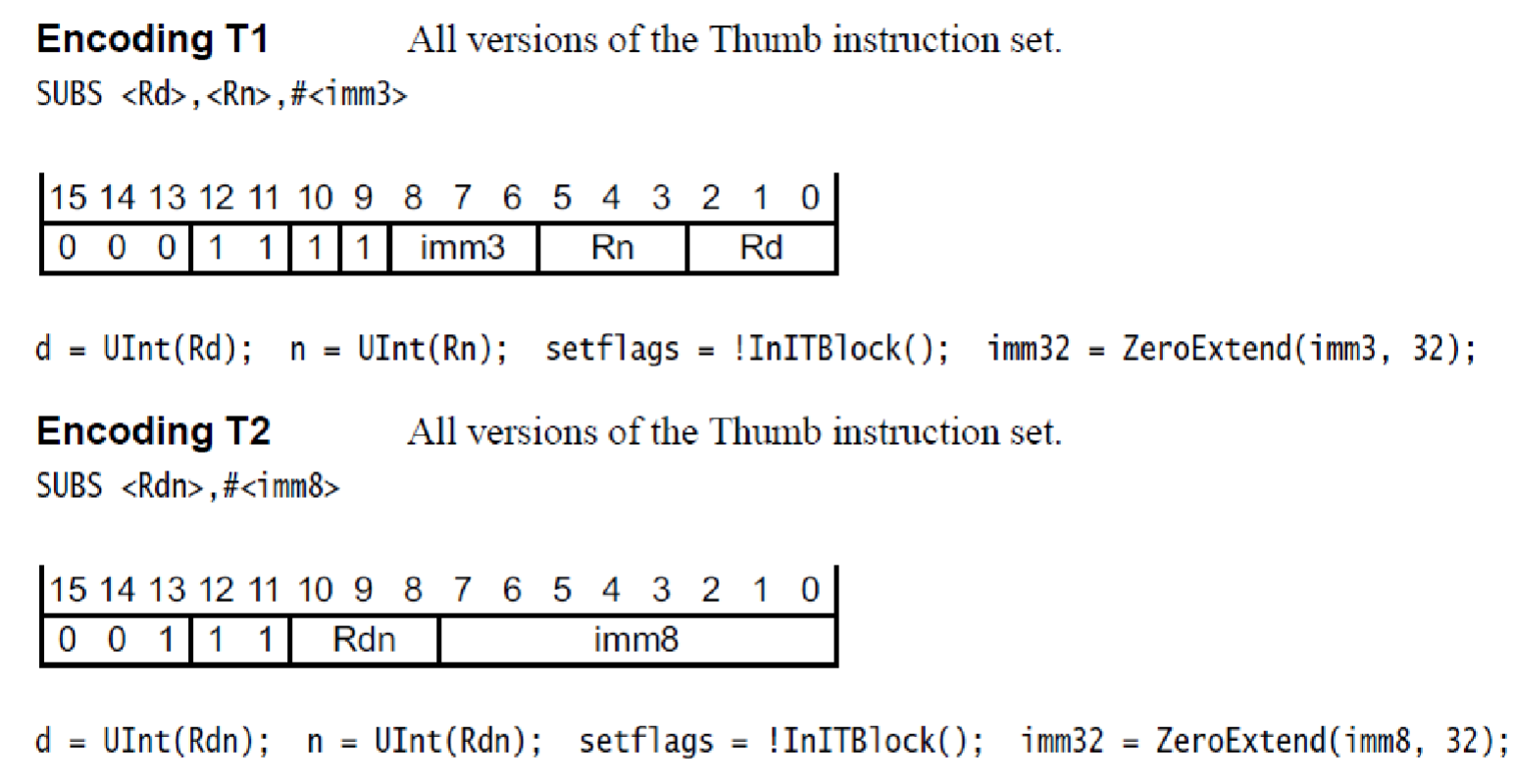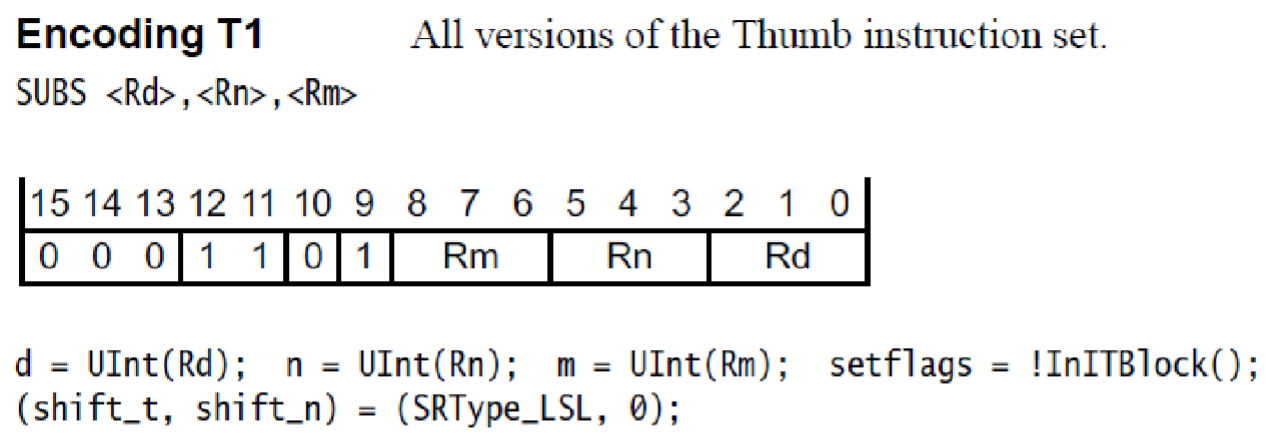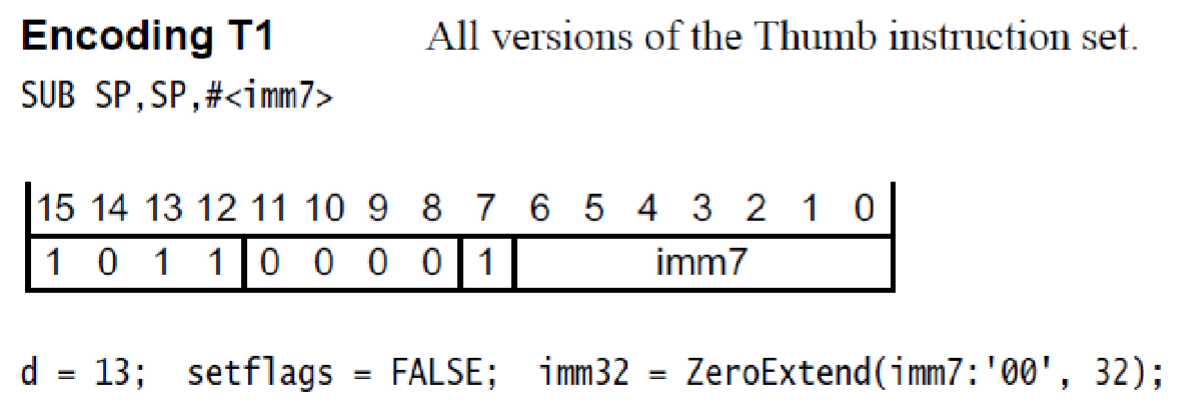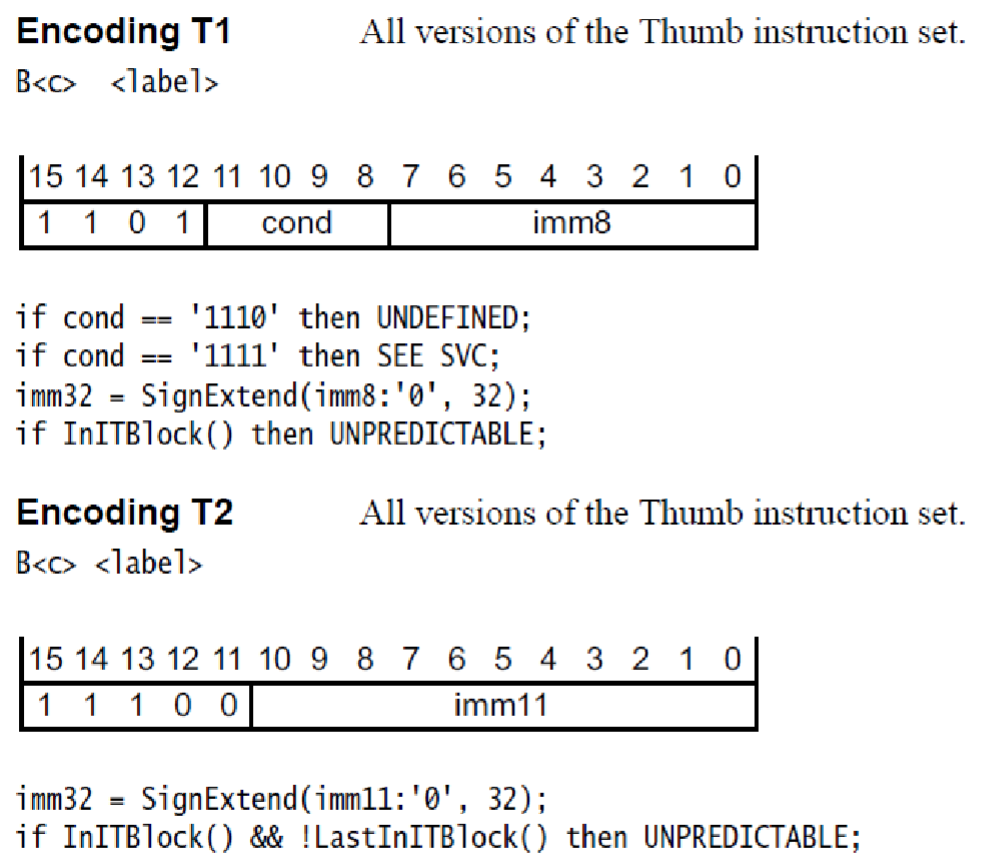ARM ISA Recap
Recall that the ARM ISA has most instructions as 16 bits; since we have resource constraints and everything costs money, we want to fit as many instructions on the chip as possible.
Some examples of instructions are
MOV 47, #4SUB R2, R2, R4which is the same asSUB R2, R4ADDS R2, R2, #3which has theSsuffix and updates the status flag
Question: Which instruction(s) are not allowed to be compiled?
SUB R2, R3SUB R5, R9SUB SP, #4
Answer: The second instruction is not legal because it accesses a higher register. The third option is legal because soetimes we want to add or subtract literals to the stack pointer.
More ARM
In this ISA, a prefix of 0x1D to 0x1F means a 32-bit instruction. Otherwise, the instruction has 16 bits.
SUB (immediate)
There are two encodings for immediate subtraction. Both have zero-extended immediate values.
- T1 has a 3-bit immediate value.
- T2 assumes
src1anddstare the same, which frees up 3 bits. This allows an 8-bit literal (there is other space freed up).

Question: What is the largest number
#Nyou can use in the instructionSUBS R5, R3, #N?
Answer: 7. The destination is distinct from the source, so we know this is the T2 encoding, so we have 3 bits for the literal.
Question: What is the largest number
#Nyou can use in the instructionSUBS R5, #N?
Answer: 255. The destination is distinct from the source, so we know this is the T2 encoding, so we have 8 bits for the literal.
Question: Can you substract negative literals? E.g.
SUBS R3, #-3.
Answer: No. The immediate value is zero-extended, not sign-extended.
SUB (register)
- T1 has two source registers and destination register. Always runs
SUBS. Normally, the assembler changesSUBtoSUBSautomatically, but you can also allow it to be nitpicky and throw an error.

SUB (SP = R13)
- T1 has the stack pointer as a destination of a literal subtraction. The stack pointer is not encoded in the instruction because it is hard-coded into the opcode. This allows a 7-bit immediate value which is zero-extended 2 bits to the left (multiply by 4) since the number in the stack pointer must be a multiple of 4. The assembler ensures the immediate value is a multiple of 4 then divides it by 4 when it creates the instruction.

MOV (immediate)
- T1 moves an 8-bit immediate value into the destination register.
MOV (register)
- T1 moves
Rm(4 bits) intoRd(3 bits) - T2 sets flags so can only allocate 3 bits to
Rm(low registers).
Sometimes we just need to move stuff around, which is when we would use the T1 encoding.
More Instruction Stuff
You can assume that add and move instructions always set status flags (S suffix).
Instructions are expressed in hexadecimal, so a 16-bit instruction would look like 0x2202. (the 0x just means the number is hexadecimal)
Most instructions take 1 cycle, except branch, load, and register manipulation instructions, which take 2 cycles. Also, multiply instructions can take a weird number of cycles. This assumes we have a 2-stage pipeline, though, and branch instructions will take longer with larger pipelines.
Branches
In some other assembly languages, branches are referred to as jumps.
We can use an unconditional branch (B) or a conditional branch (BXX where the XX suffix tells which condition causes the branch.)

Whereas conditional branches limit you to about 256 B of branch, unconditional allows you to branch about 2 kB.
The assembler often computes offset for us, so we can use labels instead, e.g. “Loop.”
We use conditional branching much more often, and it is encoded as follows:
- The T1 encoding allows an additional condition in the instruction but has a smaller immediate value (8 bits).
- the T2 encoding has a larger immediate value (11 bits). This is important because we often want to branch far away.
For both encodings, the assembler divides the immediate value by 2 in the instruction, and this gets shifted left by 1 bit when executed.

Sometimes, we want to move really really far away. This is when a 32-bit instruction would be useful. The branch & link does exactly this.

This 32-bit instruction is actually two instructions, but bits 15 to 11 of the first instruction are 11110, which is 0x1E. Recall that this tells the processor that this instruction is 32 bits.